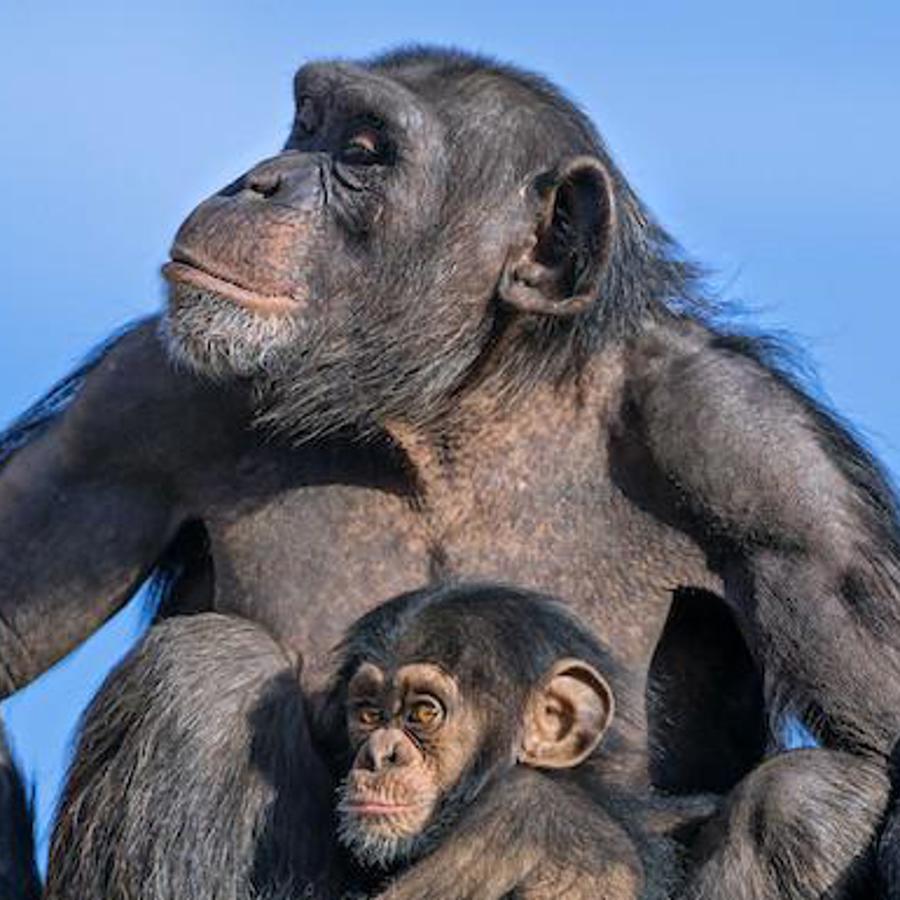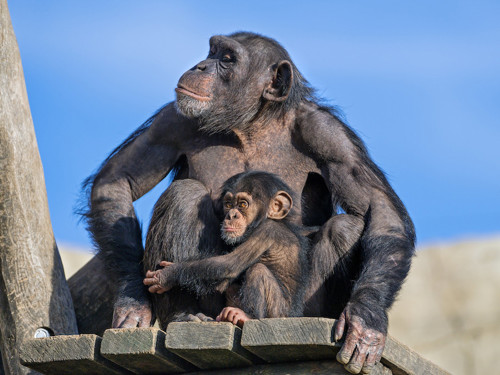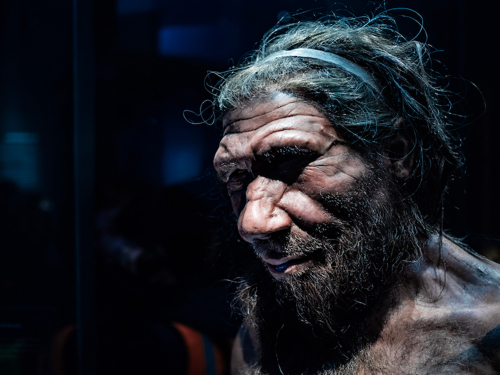
Are chimpanzees our closest relative? Why do we still differ so much?
February 3, 2011

- Related Topics:
- Human evolution,
- Evolution,
- Neanderthals,
- Comparing species
A high school student from Michigan asks:
"I was researching about the similarity in human and chimpanzee and found out that we are not as similar as originally thought...If so, what is man's closest species relative and why do we still differ so much?"
Chimpanzees (as well as Bonobos) are still our most closely related species--the fact that we shared a common ancestor 7 million or so years ago has not changed. What has changed is which differences in our DNA scientists are measuring.
DNA is made up of four different chemical “letters:” A, T, C and G. If you compare humans and chimps, you'll see that two of these letters are different out of every hundred. This is why scientists used to say that human and chimp DNA was around 98% identical.
What has changed is that scientists are now looking at more than just single letter changes (called single nucleotide polymorphisms, or SNPs). Now they're looking at bits of DNA that have gone missing (deletions) or extra bits that have been copied (insertions). When you look at these insertions and deletions, the similarity drops to 95%. But this is still more similar to humans than any other living thing out there.
Similar But Different
We obviously look different and behave differently than chimps. So how can a few percent of DNA have such an impact?
First of all, remember that we are talking about 6 billion letters of DNA here. The original 2% actually adds up to 12 million different letters. Add on top of that another 28 million letters’ worth of missing and extra DNA and you start to get some serious differences, even if it is only 5%!
Most of these differences don't cause obvious changes, but a few do. Some will lead to us being less hairy, better speakers, poorer climbers, etc.

You may have noticed that up until this point we've been talking about little tweaks here and there. We haven't talked at all about chimps and people having different genes. And that is because for the most part, they don't. Chimps and humans share most of the same genes.
A big part of what makes us different are differences in how we use these genes. Numerous studies have shown that the same genes behave differently in chimps and humans. This means that a gene might, for example, be less active in humans. Or active at a different time or different location in the body.
As we start to think a bit deeper about all of this, maybe the small difference between humans and chimps at the DNA level is reflected in more obvious differences too. How different are humans and chimps, really?
Chimps and even gorillas can learn languages and even make sentences. They use tools and show much of the same behavior that we do. They can even understand abstract concepts like their reflection in a mirror.
But there are differences, of course. Take body hair, for instance. Both humans and chimps have body hair, but chimps have a lot more of it. It’s possible that humans have very similar hair genes to chimps, but they're less active, resulting in less hair.
Let's look a bit deeper at language: even though it is still unclear exactly which of the 40 million differences in our DNA allow our brains and language skills to be more complex than in chimps, we do have clues about where to look.
The difference almost certainly is not because of new genes. Instead it is things like changes in human vocal chords that allow for the subtle sounds needed in a complex language. We probably had a mutation or two in a vocal cord gene in our recent past.
So chimps are still our closest living relatives. But we've had much closer relatives before. In fact, some of them are still walking among us (sort of).
Neanderthals: Not Completely Extinct!
I mentioned before that chimps are our closest relatives. But what I actually should have said was our closest living relatives.
We actually had much closer relatives not so long ago. The most famous are probably the Neanderthals, but there were others too. Some came before us and some shared the Earth with us at the same time. But all these other species have gone extinct and we (Homo sapiens) are the only survivors.

It is still a mystery why all other species of humans went extinct. For example, Homo erectus walked the Earth for 2 million years. We probably met them, but they vanished about 70,000 years ago.
We likewise shared the planet with Neanderthals until they also died out about 30,000 years ago. But recently, scientists have discovered something astonishing. By retrieving DNA from old Neanderthal bones, they discovered that Neanderthals are not completely extinct! They still live on in some humans.
In an exciting new study, scientists compared Neanderthal DNA to that of modern humans. Surprisingly, they saw that humans of European and Asian descent have some Neanderthal DNA in their chromosomes. This suggests that hundreds of thousands of years ago, we did not just "meet" Neanderthals: we mated with them! And although Neanderthals went extinct, some of their DNA lives on in present day Europeans and Asians.

Author: Dr. Hinco Gierman
When this answer was published in 2011, Hinco was a postdoctoral fellow in the Department of Developmental Biology, studying the genetics of human aging in Stuart Kim’s laboratory. He wrote this answer while participating in the Stanford at The Tech program.
 Skip Navigation
Skip Navigation
